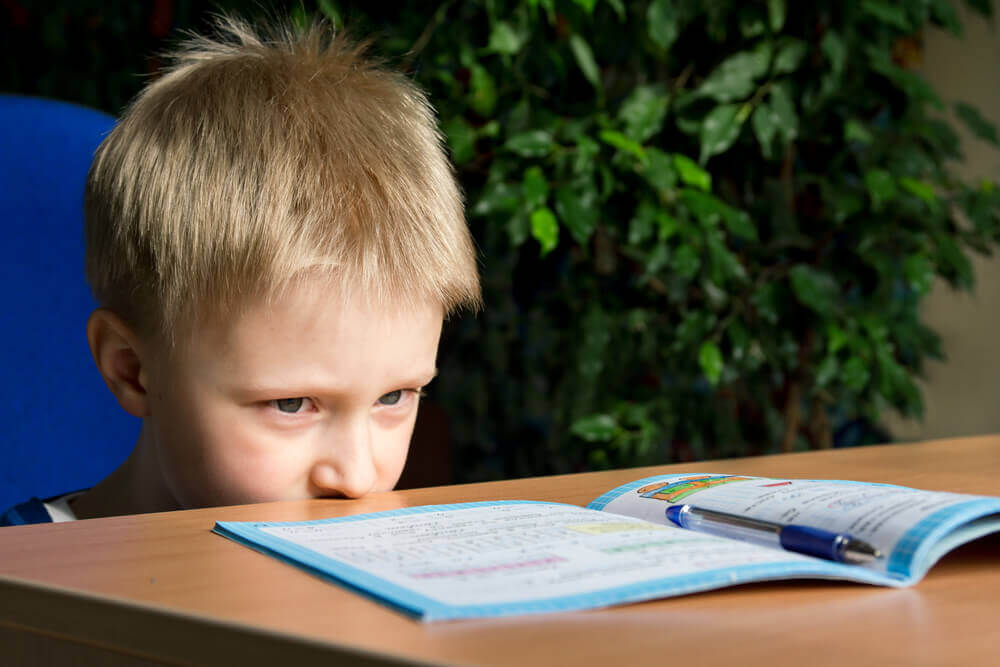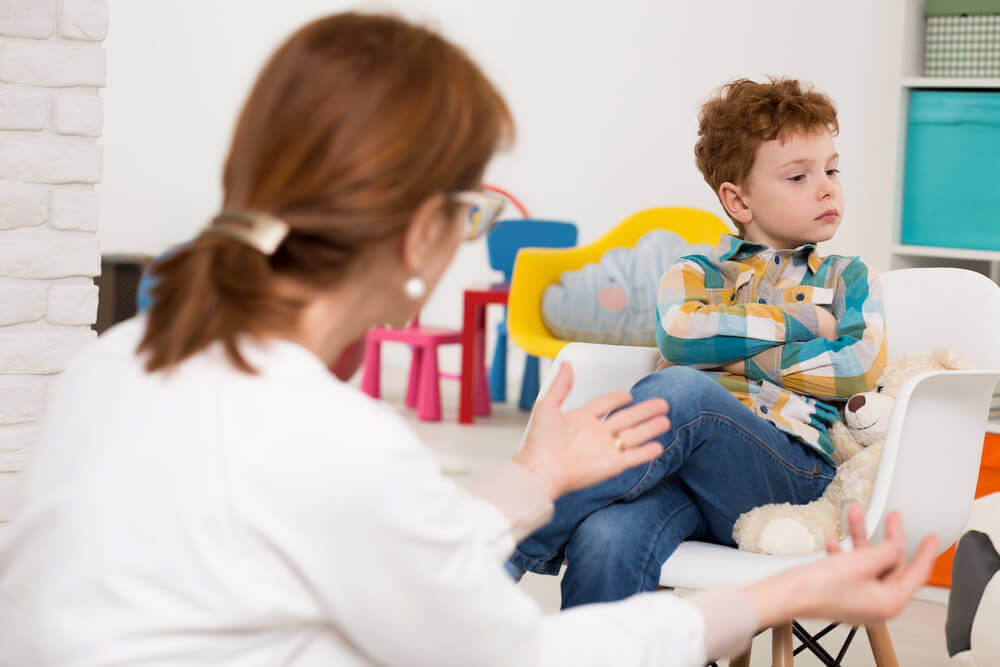Signs of Attention Deficit Disorder in Children

Attention deficit disorder in children is one of the greatest causes for worry among parents. However, due to its complexity, it is difficult to get an accurate diagnosis when you first notice its early signs.
Children with ADHD (attention deficit hyperactivity disorder) has more trouble focusing or staying still. Also, they have impulsive behaviors. What’s more, they may find it difficult to form interpersonal relationships in school, family and social environments.
The disorder is usually diagnosed at 7 years old, but many of its signs are noticeable before. However, the problem is that it’s more difficult to diagnose between 4 and 6 years. This is because it is hard to tell the difference between these signs and young children’s normal behavior.
In spite of this, it’s essential that you learn about it. This is because you can use its first signs to begin to track it.
Below, we will review its main causes and the signs that help you detect it.
Causes of Attention Deficit Disorder in Children

It’s not known for sure what causes attention deficit disorder in children.
However, it is believed that genetic, neurological and environmental factors are involved in its development.
More specifically, its possible causes include:
- Family history of ADHD or mental illness.
- Inability to regulate levels of brain chemicals such as dopamine and norepinephrine.
- Using cigarettes and alcohol during pregnancy.
- Food additives such as artificial colors, which can make hyperactivity worse.
- Brain damage or injuries.
Some have suggested that eating refined sugar can also affect the appearance of this condition. However, there’s not enough scientific evidence to confirm this claim.
Read this article: How to Control Child Rebellion
Signs of Attention Deficit Disorder in Children
The signs of attention deficit disorder in children vary. Also, they tend to change as the child moves through the stages of development. However, the disorder can continue into adolescence and adulthood.
That said, seeing one or more sign does not mean that the diagnosis will be this disorder exactly.
For this reason, once you detect warning signs, you should get an evaluation. Seek out a professional on the subject, such as a pediatric neurologist or psychiatrist.
Tests can take several months before a final diagnosis. Often, they include interviews with parents and teachers.

Signs of ADHD in Children:
- Having a hard time focusing and paying attention,
- Having trouble following instructions,
- Being disorganized,
- Losing important things,
- Forgetting relevant details during tasks,
- Being unable to focus on a single task or game,
- Not being able to understand easily,
- Not wanting to do mentally demanding activities,
- Becoming bored with the same activity and stopping it before finishing it,
- Making mistakes that show a lack of attention.
Signs of Hyperactivity:
- Moving constantly and playing with objects that are within reach, even in situations that require attention,
- Talking a lot,
- Having trouble participating in quiet activities,
- Running around or climbing to inappropriate places,
- Feeling anxious when staying in the same place,
- Sometimes reacting explosively.
Signs of impulsiveness:
- Not having patience,
- Having trouble waiting his turn or staying still in a line,
- Acting and speaking without thinking,
- Crossing the street without looking,
- Interrupting others,
- Participating in games and conversations of others,
- Looking for quick alternatives to solve problems.
Diagnosis and Treatment

In order to get this diagnosis, you must complete a process that takes months. During this time, a mental health professional or pediatrician specialized in ADHD bases this on criteria in the Diagnostic and Statistical Manual of Mental Disorders (DSM-5).
The process takes time for the professional to meet the child and analyze his relationship with his environment. Also, it’s essential that they get to know his family and the people close to him.
If they confirm the condition, they will create a management plan. They will adapt it to each particular situation.
Sometimes, they may recommend medications. However, they almost always recommend behavioral therapy as a first step. Occasionally, it’s necessary to use the two together.
The exact length of the treatment cannot be given. Rather, it depends on how each person develops.
Discover: Values in the Home: The Secret to a Successful Generation
In Summary
Attention deficit disorder in children affects the child’s ability to focus. Also, it can be accompanied by symptoms of hyperactivity and impulsiveness.
Although it sometimes appears at very young ages, diagnosis is only possible when the child should already be able to manage many of his or her behaviors.
All cited sources were thoroughly reviewed by our team to ensure their quality, reliability, currency, and validity. The bibliography of this article was considered reliable and of academic or scientific accuracy.
- Rodríguez Hernández, P. J., González González, I., & Manuel Gutiérrez Sola, A. (2015). El trastorno por déficit de atención e hiperactividad. Pediatria Integral. https://doi.org/10.1157/13086847
- Urzúa M., A., Domic S., M., Cerda C., A., Ramos B., M., & Quiroz E., J. (2009). Trastorno por Déficit de Atención con Hiperactividad en Niños Escolarizados. Revista Chilena de Pediatria. https://doi.org/10.4067/S0370-41062009000400004
- Mateo, V. F. (2006). Recursos para el diagnóstico psicopedagógico del TDAH y comorbilidades. Electronic Journal of Research in Educational Psychology. https://doi.org/10.2166/wst.2011.267
- Tdah, N. Del, Arán, V., Mias, C., Filippetti13, V. A., & Mías2, C. D. (2009). Neuropsicología delTrastorno por Déficit de Atención/Hiperactividad: subtipos predominio Déficit de Atención y predominio Hiperactivo-Impulsivo. Revista Argentina de Neuropsicología.
- El TDAH en niños – Síntomas y causas – Mayo Clinic. (2019). Retrieved 26 November 2020, from https://www.mayoclinic.org/es-es/diseases-conditions/adhd/symptoms-causes/syc-20350889
This text is provided for informational purposes only and does not replace consultation with a professional. If in doubt, consult your specialist.








